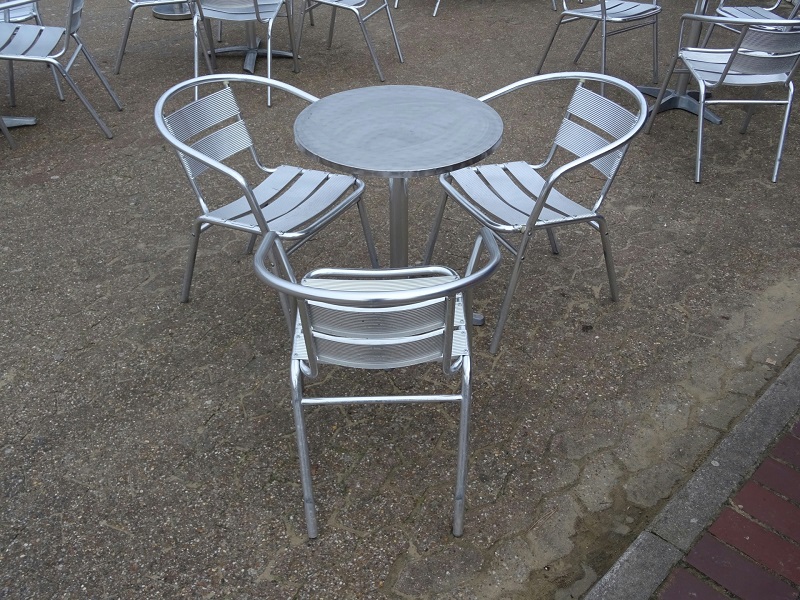What are the different industries that utilize aluminum?
- Construction
- Electrical engineering
- Transport
- Consumer goods
- Packaging
Aluminum is one of the, if not the most, versatile materials available in the world. Aside from this, it is widely available and makes up almost a tenth of the earth’s crust. It can be found everywhere and is only second to iron in being the most used metal in the world.
There are many kinds and types of aluminum profiles in the Philippines, and each and every one of them as a specific and ideal use. Nothing goes to waste. Due to its qualities, properties, and diversity, aluminum has become an integral part of modern life. It’s not an understatement to say that the world will find it hard to function once it is lost.
If every trace of aluminum was wiped from the face of the planet, several establishments and organizations are going to suffer. These are the industries that make a living off of aluminum and would cease to function without the material. All of them will be listed below.
Construction
The construction industry uses approximately 25% of the aluminum produced in the world. It has brought about many changes and innovations in the industry.
The continuously changing image of towns and cities, the functional, economic, and environmental qualities of modern-day megalopolises, and the countless skyscrapers that attract numerous tourists—all these were made possible with the use of aluminum in construction.
Its qualities are what makes it stand out from all the other construction materials. There aren’t many that are as lightweight, strong, resistant to corrosion, durable, and moldable as aluminum. In the hands of a master architect that has unlimited creativity, aluminum can be shaped into any shape and form to create structures that would be impossible to build using other materials.

Electrical Engineering
Electricity is what sets everything in motion. Without it, many industries will end. Even the aluminum manufacturing industry itself would cease to function, which is why we should be extremely grateful that aluminum was discovered.
Aluminum isn’t just a universal structural material, it can also be used in the field of electrical or power engineering. Along with copper, aluminum is considered to be one of the best electrical conductors.
In some cases, it beats copper off the top spot. Weight is one of the most important factors for high-voltage power lines. These are the ones that transmit electricity over long distances like overhead power lines. For these applications, aluminum is preferred because it is light-weight.
Transportation
The transport or transportation industry accounts for 27% of aluminum consumption—the largest share across all industries—and it is expected to grow over the following years.
Think of all the different types of transportation available worldwide. Airplanes, bikes, cars, trains, even space shuttles; all these are made from aluminum. Although not purely made from aluminum, you can bet that they’re at least 50% composed of the material.
Aluminum is a favorite in the transport industry for the same reasons architects use the material. It is lightweight, easily formed to various shapes, durable, resistant to elements, and can withstand different weather climates and conditions.

Consumer Goods
We weren’t kidding when we said that aluminum has become an integral part of modern life. Most of the things you use in your everyday life are made from aluminum. Furniture, home appliances, machines, mirrors, equipment, and gadgets.
Manufacturers love to use aluminum for its affordability that is partnered with a perfect blend of beauty and practicality. These qualities are what made aluminum a success in the consumer goods industry. Gadgets can look reliable and sophisticated and remain light and robust. The same goes for aluminum furniture. Creators can make them look absolutely stunning with little effort because of the natural qualities of the material.
In recent years, aluminum has replaced former favorites like steel and plastic and the trend will only continue in the many years to come.
Packaging
There are two main things that make aluminum the best packaging material in the world.
First is it’s non-toxic. This quality removes the risk of poisoning and contamination regardless of the product or food being packaged and where it is shipped to. Second is its recyclability. Year after year, millions of aluminum cans are used and thrown. If aluminum weren’t such a recyclable product, we’d now be buried in decades-worth of aluminum waste. Luckily, aluminum is a unique material in that it can be recycled an infinite number of times.
On top of this, aluminum can be pressed into the thinnest sheets but still be able to protect goods from the harmful effects of bacteria, liquid, and light, ultimately allowing longer shelf life.
Key Takeaway
All these industries make use of different kinds of aluminum profiles in the Philippines. Without this miracle material, the construction, transportation, electrical engineering, consumer goods, and packaging industry would still be stuck in their old ways using materials that are not as effective and are far less efficient. Not only can this possibly lower quality, it can even increase prices.